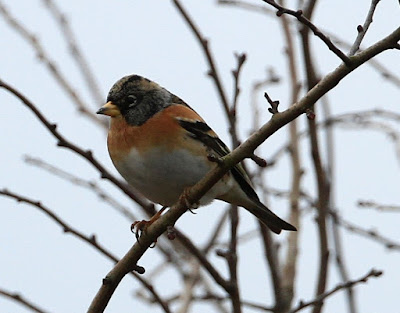The surrounding mixed woodland held 6+ singing Song Thrushes, singing Mistle Thrush, singing Blackbird, Redwings, singing Goldcrest (3+ males), 5+ Treecreepers (4 males singing), Nuthatch, Blue, Great, and Coal Tits. Long-tailed Tits also seen.
The pools around this site produced a pair of Mallards, pair of Gadwall, and a single Grey Heron.
 |
| Relic fen habitat holding singing Yellowhammer and a pair of Reed Buntings 27/02/17 |
The site visited this afternoon is very sparsely vegetated, the open, arable habitat here was the site of the former WW2 base, home of the 452nd bomb group which flew B17 Flying Fortresses.
Although appearing barren, there are pockets of valuable habitat (including some wonderful Sallow) which provide shelter for wintering birds as well as good breeding sites for Warblers. The open habitat here has produced Merlin and passing Harrier species in the past.
Few species seen on this visit. Several Skylarks sang against the low, grey cloud, also a single male Yellowhammer seen in flight. A pair of Linnets passed over. An isolated patch of field-side scrub held a singing Dunnock.






